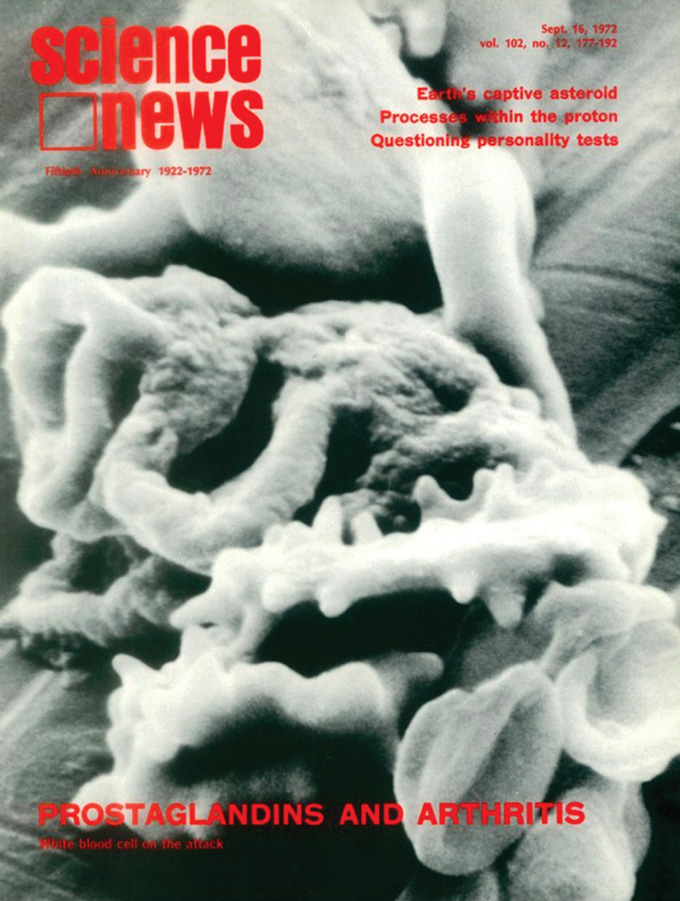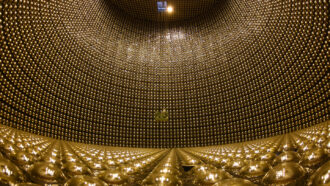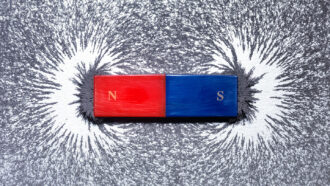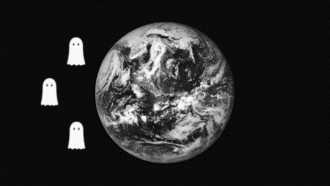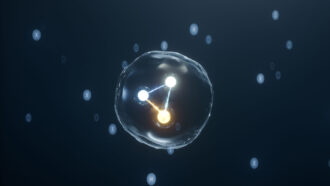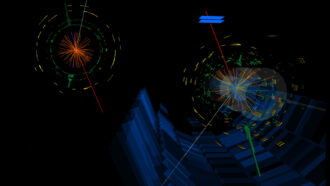50 years ago, physicists got a whiff of what glues together protons
Excerpt from the September 16, 1972 issue of Science News
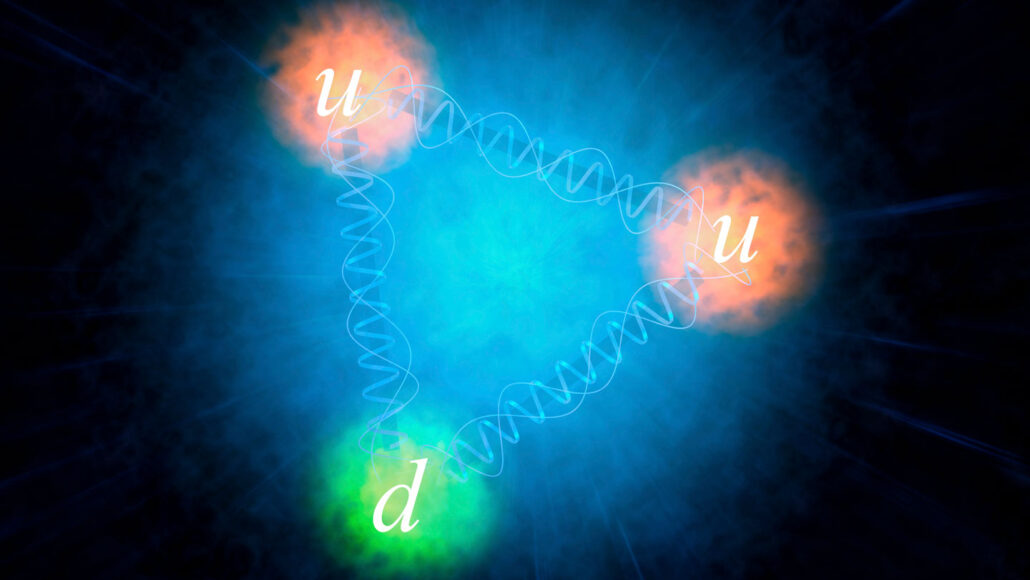
In this illustration of a proton’s internal structure, quarks (represented by the letters U and D) are held together by the strong nuclear force (helices), which is imparted by particles called gluons.
Mark Garlick/Science Photo Library/Getty Images Plus
